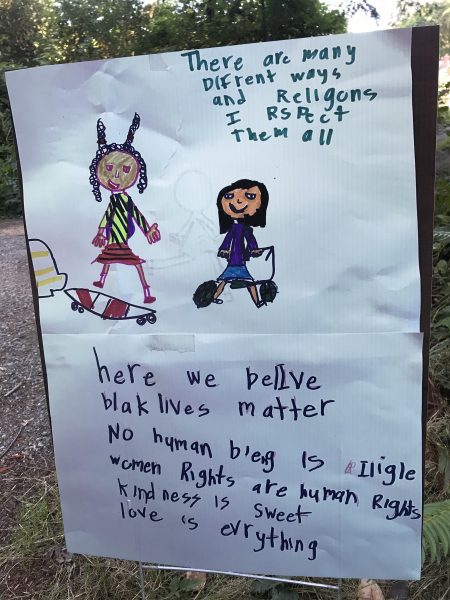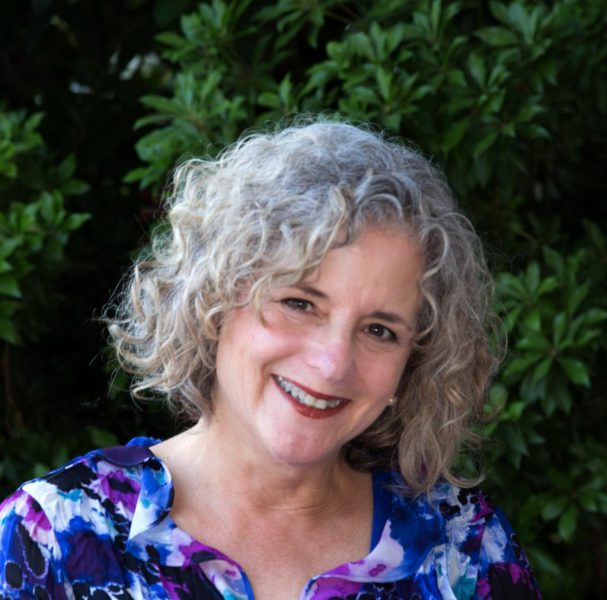Art can be a salvation for children, especially now during a pandemic.
I’ve practiced child psychiatry for almost 40 years in the United States and internationally and have seen the healing effect of art firsthand. I know that art saves lives. With the COVID pandemic stressing families and children, art can play an essential role.
The Arts in Education program is one of the many reasons I joined the board of Arts & Humanities Bainbridge. Now in its 22nd year, the Arts in Education Program is a network of classroom teachers, teaching artists, school administrators, and community partners working together to provide quality arts education and arts integration in classrooms on Bainbridge Island and in Suquamish.
Arts in Education has served more than 33,000 students in grades K-12. With COVID keeping schools closed for now, AHB is working hard to collaborate with our resident artists to develop art residencies that will be incorporated virtually into the school curriculum. Additionally, our Arts Education sub-site – bainbridgecurrents.com/artsed – has a host of art programs and resources to support parents while their children are studying at home. Visit the site for a full list of our residencies and professional teaching artists, and resources.

But let me tell you a little more about why as a child psychiatrist I know how the arts can help children get through tough times.
According to the American Academy of Child and Adolescent Psychiatry, before COVID 95 percent of American youth were enrolled in school where they had direct contact with staff and peers at least six hours a day. What happens when attending school in person is no longer possible? Some kids thrive using virtual learning but many find the challenges to be enormous. The pandemic is a source of significant stress to families and children. We are already experiencing a rise in stress, anxiety, and depression in our youth.
I am not suggesting that art alone saves kids. The kids I have treated over four decades were unwell enough to require the help of a child psychiatrist for diagnostic assessment and treatment as well as critical ongoing work with a psychotherapist. Many were often seriously suicidal. Some required brief periods of hospitalization. When I think about how art can help children suffering with mental health issues, a number of the kids I’ve treated stand out.
I can’t use their names, but let me first tell you about “A.” “A” was an intellectually gifted child with autism who managed overwhelming anxiety and bouts of crippling depression by writing narrative stories and drawing characters in a notebook he always carried with him. “B” was a shy and talented teenager with significant family stressors and significant communicating difficulties who also experienced severe depression. Music, dance and creating elaborate costumes provided this individual with enormous relief. “C” was a very bright and accomplished high school student with a severe mood disorder, chronic suicidality and thoughts of self-harm who used fashion design and acting as a way of managing disturbing mood swings. “D” was a very unhappy teenager who was frequently unable to attend school because of severe social anxiety and depression. The only time of the day this adolescent brightened was during dance class. “E” was a quiet and shy teen with severe depression and suicidal thoughts who managed very depressed moods by writing poetry and songs, producing, and performing music.
I could go on and on through the rest of the alphabet. Art allowed these kids to cope. Whenever possible I worked with families to find structured art opportunities for these youth.
In November 2019, the World Health Organization’s European regional office issued a report concluding that “the overall evidence base shows a robust impact of the arts on both mental and physical health.”
We are fortunate on Bainbridge Island. If you are worried about your own child, there are numerous resources for families and youth and it is important that you seek support. A good place to start is with your primary care physician.
Additional resources are listed here:
Bainbridge Prepares PFA team page
Bainbridge Psychotherapy Guild

Linda Semlitz, MD Child Psychiatrist. Linda is a retired child psychiatrist who maintained a private practice in Child Psychiatry on Bainbridge Island. She lived and worked in Asia from 1995 – 2014. During that time she worked as a Medical Director and Director of Medical Affairs for Merck, Sharpe and Dohme, a pharmaceutical non-profit mental health organization in Tokyo that provided mental health treatment and disaster response after the 3/11 earthquake, tsunami and nuclear meltdown. She currently serves on the board of the Global Fund for Mental Health. She joined the AHB Board of Directors in 2017.